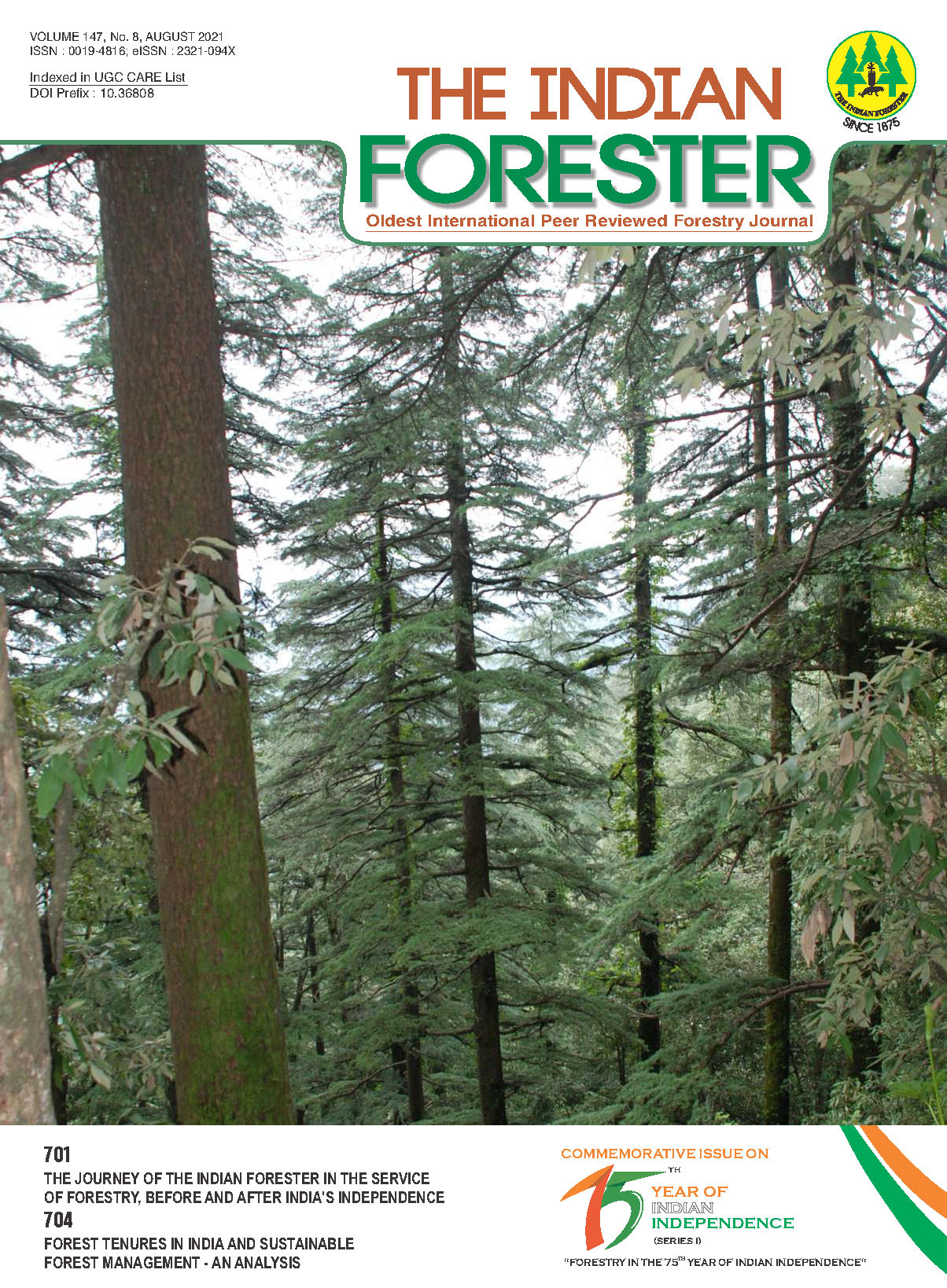Development of Protocol for Propagation of Zanthoxylum alatum through Mound Layering
DOI:
https://doi.org/10.36808/if/2021/v147i8/155403Keywords:
Girdling, Indole Butyric Acid, Mound Layering, Stooling, Zanthoxylum alatum.Abstract
Zanthoxylum alatum (commonly known as Timur, Timru, Tomar) is an important medicinal plant found in the warmer valleys of the Himalayas, parts of north-east and eastern India. Propagation through shoot cuttings is one of the most common methods of vegetative propagation in many woody species. This study was initiated to investigate the potential of mound layering as an alternative vegetative propagation method for propagating many hard to root plants without requiring expensive equipment and it has been successfully used in horticulture on many species. The simplicity of this method makes it fascinating to test it for multiplication of Z. alatum. Results from wounding was found to have a significant (p≤0.05) effect on bud sprout, number of shoots per stools, shoot length and diameter, rooting per cent, number of roots, root length and per cent survival of the rooted shoots during spring season. Girdling proved to be the most effective method of wounding that yielded greatest number of shoots, rooting per cent, shoot length, shoot diameter, number of roots, root length and per cent survival. Furthermore, girdling method resulted in better survival of rooted shoots (65.20%) than random wounding (49.76%). Among IBA treatments, greater survival rate was achieved with 6000 ppm IBA (48.71%) in comparison with control (42.74%).  It was therefore felt necessary to develop protocols for vegetative propagation of this species through cuttings and mound layering with the goal of working out multiplication rates by both methods.
References
Animesh S. and Ghosh B. (2006). Air layering in guava cv. L49 as affected by plant growth regulators, wrappers and time of operation. Environment and Ecology, 24(3): 820-823.
Erdogan V. and Smith D.C. (2005). Application on rooting of hazelnut layers. Hort Science, 40(5): 1457-1460pp.
Hartmann H.T., Kester D.E., Davies F.T. and Geneve R.L. (2010). Hartmann and Kester's Plant Propagation: Principles and Practices. (8th Edition). Prentice Hall. NJ, (USA). 928.
Jones J. R., LeBude A.V. and Ranney T.G. (2010). Vegetative Propagation of Oconee Azalea (Rhododendron flammeum) by Stem Cuttings and Mound Layering. Journal of Environmental Horticulture, 28(2): 69-73.
Porlingis I.C., Petridou M. and Voyiatzis D.G. (1997). An improved method of propagating the olive by mound-layering. In III International Symposium on Olive Growing 474 (pp. 59-62).
Purohit S., Arun Bhatt I. D. Bhatt and S.K. Nandi (2015). Micro-propagation of Zanthoxylum armatum DC-an Endangered Medicinal Plant of the Himalayan Region, and Assessment of Genetic Stability of In Vitro Raised Plants. Proc. Natl. Acad. Sci., India, Sect. B Biol. Sci.
Purohit S., Joshi K., Rawat V., Bhatt I.D. and Nandi S.K. (2019). Efficient plant regeneration through callus in Zanthoxylum armatum DC: an endangered medicinal plant of the Indian Himalayan region. Plant Biosystems-An International Journal Dealing with all Aspects of Plant Biology,1-7.
Reddy K.M. and Singh R.N. (1987). Effect of bottom heat, propagation duration and wounding treatment on rooting of hardwood cuttings of mango. Journal of Research, APAU, 15(1): 24-30.
Saumitro D. (2014). Effect of Wounding and Plant Growth Regulators (IBA and NAA) onroot proliferation of Taxuswallichiana shoot cuttings. Research Journal and Agriculture and Forestry Sciences, 2(12): 8-14.
Yousif A.R. and Faizy H.S. (2013). Effect of wounding and different concentrations of indole butyric acid (IBA) on rooting of hard wood cuttings of Plumbagocapensis plant. Journal Tikrit University for Agricultural Sciences, 13(1): 360-365.
Zargar A. (2015). Studies on variability and macropropagation in Diploknema butyracea Lam. Silviculture and forest management division, Forest Research Institute, Dehradun Uttarakhand.
Downloads
Downloads
Additional Files
Published
How to Cite
Issue
Section
License
Unless otherwise stated, copyright or similar rights in all materials presented on the site, including graphical images, are owned by Indian Forester.





